ASTRONOMERS CAPTURE BEST VIEW EVER OF DISINTEGRATING COMET
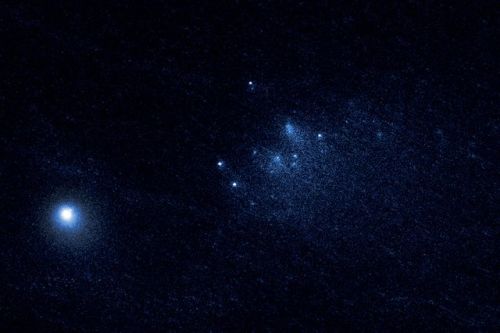
ASTRONOMERS CAPTURE BEST VIEW EVER OF DISINTEGRATING COMET
Astronomers have captured the sharpest, most detailed observations of a comet breaking apart 67 million miles from Earth, using NASA’s Hubble Space Telescope. The discovery is published online today in Astrophysical Journal Letters [http://apjl.aas.org].
In a series of images taken over three days in January 2016, Hubble showed 25 fragments consisting of a mixture of ice and dust that are drifting away from the comet at a pace equivalent to the walking speed of an adult, said David Jewitt, a professor in the UCLA departments of Earth, Planetary and Space Sciences; and Physics and Astronomy, who led the research team.
The images suggest that the roughly 4.5-billion-year-old comet, named 332P/Ikeya-Murakami, or Comet 332P, may be spinning so fast that material is ejected from its surface. The resulting debris is now scattered along a 3,000-mile-long trail, larger than the width of the continental United States.
These observations provide insight into the volatile behavior of comets as they approach the Sun and begin to vaporize, unleashing powerful forces.
“We know that comets sometimes disintegrate, but we don’t know much about why or how,” Jewitt said. “The trouble is that it happens quickly and without warning, so we don’t have much chance to get useful data. With Hubble’s fantastic resolution, not only do we see really tiny, faint bits of the comet, but we can watch them change from day to day. That has allowed us to make the best measurements ever obtained on such an object.”
The three-day observations show that the comet shards brighten and dim as icy patches on their surfaces rotate into and out of sunlight. Their shapes change, too, as they break apart. The icy relics comprise about four percent of the parent comet and range in size from roughly 65 feet wide to 200 feet wide. They are separating at only a few miles per hour as they orbit the Sun at more than 50,000 miles per hour.
The Hubble images show that the parent comet changes brightness frequently, completing a rotation every two to four hours. A visitor to the comet would see the Sun rise and set in as little as an hour, Jewitt said.
The comet is much smaller than astronomers thought, measuring only 1,600 feet across, about the length of five football fields.
Comet 332P was discovered in November 2010, after it surged in brightness and was spotted by two Japanese amateur astronomers.
Based on the Hubble data, the research team suggests that sunlight heated the surface of the comet, causing it to expel jets of dust and gas. Because the nucleus is so small, these jets act like rocket engines, spinning up the comet’s rotation, Jewitt said. The faster spin rate loosened chunks of material, which are drifting off into space. The research team calculated that the comet probably shed material over a period of months, between October and December 2015.
Jewitt suggests that some of the ejected pieces have themselves fallen to bits in a kind of cascading fragmentation. “We think these little guys have a short lifetime,” he said.
Hubble’s sharp vision also spied a chunk of material close to the comet, which may be the first salvo of another outburst. The remnant from still another flare-up, which may have occurred in 2012, is also visible. The fragment may be as large as Comet 332P, suggesting the comet split in two. But the remnant wasn’t spotted until Dec. 31, 2015, by a telescope in Hawaii.
That discovery prompted Jewitt and colleagues to request Hubble Space Telescope time to study the comet in detail.
“In the past, astronomers thought that comets die when they are warmed by sunlight, causing their ices to simply vaporize away,” Jewitt said. “But it’s starting to look like fragmentation may be more important. In comet 332P we may be seeing a comet fragmenting itself into oblivion.”
The researchers estimate that comet 332P contains enough mass for 25 more outbursts. “If the comet has an episode every six years, the equivalent of one orbit around the Sun, then it will be gone in 150 years,” Jewitt said. “It’s just the blink of an eye, astronomically speaking. The trip to the inner solar system has doomed it.”
The icy visitor hails from the Kuiper belt, a vast swarm of objects at the outskirts of our solar system. As the comet traveled across the system, it was deflected by the planets, like a ball bouncing around in a pinball machine, until Jupiter’s gravity set its current orbit, Jewitt said.
More Posts from Astrotidbits-blog and Others
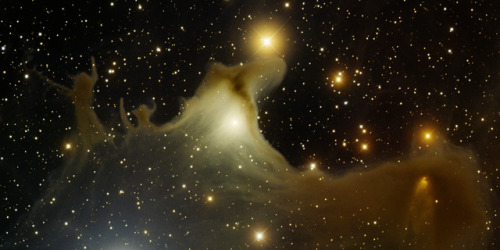
NGC 7023, Ghost Nebula


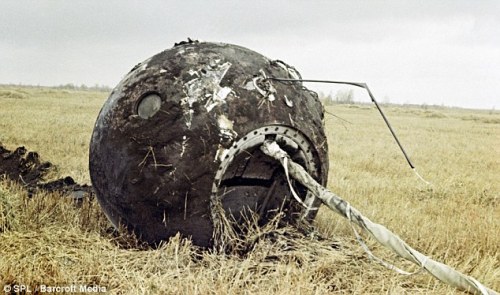

April 12th 1961: Yuri Gagarin becomes the first man in space
On this day in 1961, the Russian cosmonaut Yuri Gagarin became the first human to travel into outer space. Gagarin, a fighter pilot, was the successful candidate for the mission, being selected by Russian space programme director Sergei Korolev. Russia already had a lead in the Space Race, having launched Sputnik 1 in 1957, which was the first satellite in space. On April 12th 1961, Gagarin left Earth aboard the Vostok 1 spacecraft, famously declaring ‘Poyekhali!’ (which means ‘Let’s go!’ in Russian). He spent 108 minutes completing an orbit of the planet. Upon re-entering the atmosphere, Gagarin executed a successful ejection and landed by parachute in rural Russia, to the consternation of locals. Yuri Gagarin became famous worldwide and a Russian hero, being awarded the nation’s highest honour - Hero of the Soviet Union. Gagarin died in 1968 when the training plane he was piloting crashed; his ashes were buried in the walls of the Kremlin.
“Don’t be afraid, I am a Soviet citizen like you, who has descended from space and I must find a telephone to call Moscow!” - Gagarin to some stunned farmers when he landed
Space shuttle launch (no sound).
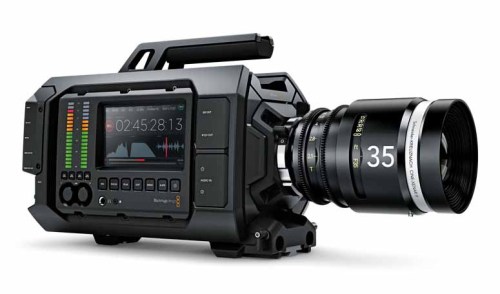
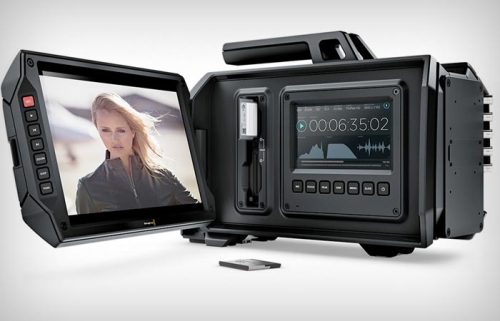

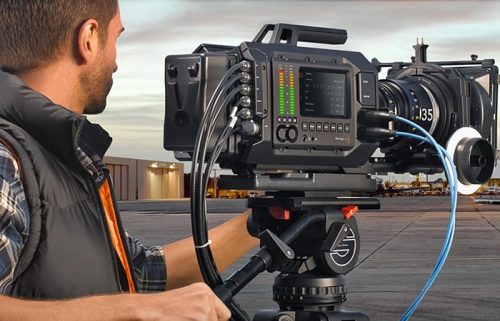
Blackmagic URSA 4K Digital Cinema Camera
And now that one special, prestigious piece of gear has finally arrived to round off the years of camera development and take you to the vertiginous peaks of unbelievable footage quality and extreme equipment versatility: the recently released Blackmagic URSA 4K Digital Cinema Camera is the ultimate camera for professional film crews and keen solo cameramen looking to revolutionize their filming sessions.
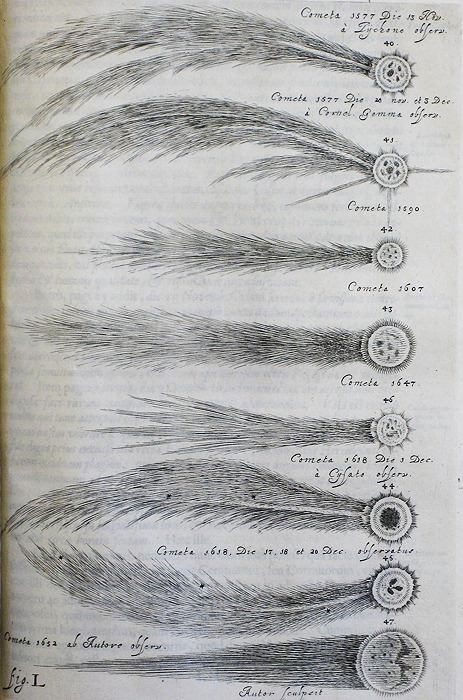
Johannes Hevelius, Cometographia (Danzig, 1668), Fig. L


NASA’s Cassini spacecraft shows Earth and its moon from between Saturn’s rings
NASA’s Cassini spacecraft, which orbits Saturn, took a picture of Earth from between Saturn’s rings — with Earth’s moon at its side.
Captured at 1:41 a.m. Eastern on April 12, 2017, the spacecraft was 870 million miles away from its home planet when it took the image.
Earth is seen as a tiny bright speck in the center of the picture. Upon cropping and zooming in, its moon can be seen to the left as an even smaller dot. The photograph, captured by the Imaging Science Subsystem, doesn’t clearly show which part of Earth is facing the ringed planet at the time the picture was taken, but NASA has revealed it is the southern Atlantic Ocean. Read more (4/21/17)
follow @the-future-now

Resembling our Moon, and with a similar atmosphere, Mercury has enough activity in its interior to generate a small magnetic field. Join guides Denton Ebel and Carter Emmart for an up-close examination of our solar system’s smallest planet.
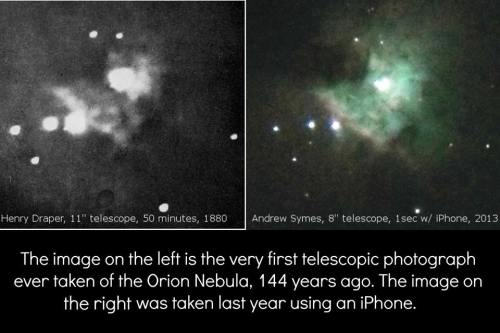
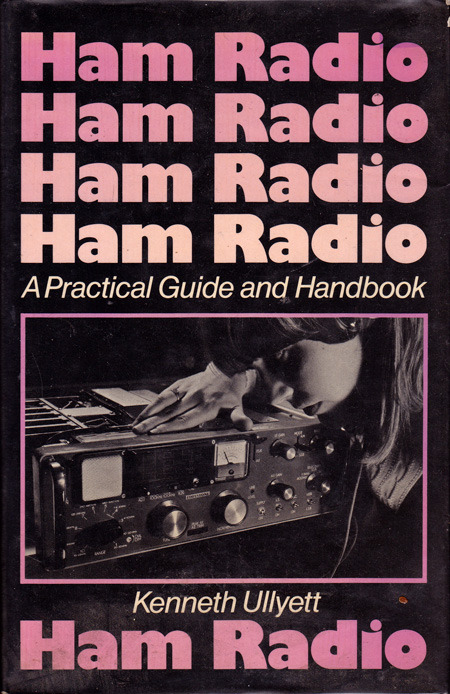
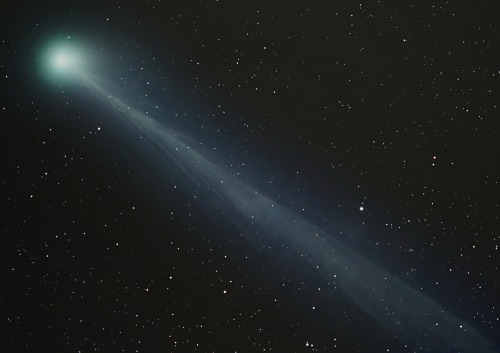
-
 requins-lair reblogged this · 6 years ago
requins-lair reblogged this · 6 years ago -
 lapis-head liked this · 7 years ago
lapis-head liked this · 7 years ago -
 gayboops liked this · 7 years ago
gayboops liked this · 7 years ago -
 astrotidbits-blog reblogged this · 8 years ago
astrotidbits-blog reblogged this · 8 years ago -
 astrotidbits-blog liked this · 8 years ago
astrotidbits-blog liked this · 8 years ago -
 skyriderwednesday liked this · 8 years ago
skyriderwednesday liked this · 8 years ago -
 radioactivepeasant liked this · 8 years ago
radioactivepeasant liked this · 8 years ago -
 authorbettyadams reblogged this · 8 years ago
authorbettyadams reblogged this · 8 years ago -
 themagdalenwriting reblogged this · 8 years ago
themagdalenwriting reblogged this · 8 years ago -
 pb1958 liked this · 8 years ago
pb1958 liked this · 8 years ago -
 obe reblogged this · 8 years ago
obe reblogged this · 8 years ago -
 bloodinthebones liked this · 8 years ago
bloodinthebones liked this · 8 years ago -
 delika-t reblogged this · 8 years ago
delika-t reblogged this · 8 years ago -
 watsdaughter liked this · 8 years ago
watsdaughter liked this · 8 years ago -
 themagdalenwriting liked this · 8 years ago
themagdalenwriting liked this · 8 years ago -
 lyricwritesprose reblogged this · 8 years ago
lyricwritesprose reblogged this · 8 years ago -
 asstroalex reblogged this · 8 years ago
asstroalex reblogged this · 8 years ago -
 uttinj liked this · 8 years ago
uttinj liked this · 8 years ago -
 fl-uxxx reblogged this · 8 years ago
fl-uxxx reblogged this · 8 years ago -
 cafuneys liked this · 8 years ago
cafuneys liked this · 8 years ago -
 whaddyagonnadoehhh reblogged this · 8 years ago
whaddyagonnadoehhh reblogged this · 8 years ago -
 whaddyagonnadoehhh liked this · 8 years ago
whaddyagonnadoehhh liked this · 8 years ago -
 javada1205 liked this · 8 years ago
javada1205 liked this · 8 years ago -
 holesinrealityy liked this · 8 years ago
holesinrealityy liked this · 8 years ago -
 byron08 liked this · 8 years ago
byron08 liked this · 8 years ago -
 saxjazzman770-blog liked this · 8 years ago
saxjazzman770-blog liked this · 8 years ago -
 astronomyandastrophotography reblogged this · 8 years ago
astronomyandastrophotography reblogged this · 8 years ago -
 snappyjackstuff liked this · 8 years ago
snappyjackstuff liked this · 8 years ago -
 thehumanwearingturtlenecks liked this · 8 years ago
thehumanwearingturtlenecks liked this · 8 years ago -
 moonstar-magic liked this · 8 years ago
moonstar-magic liked this · 8 years ago -
 the-telescope-times liked this · 8 years ago
the-telescope-times liked this · 8 years ago -
 shameless-robot-fucker reblogged this · 8 years ago
shameless-robot-fucker reblogged this · 8 years ago -
 cryptiid-exe liked this · 8 years ago
cryptiid-exe liked this · 8 years ago -
 gojiro reblogged this · 8 years ago
gojiro reblogged this · 8 years ago -
 gojiro liked this · 8 years ago
gojiro liked this · 8 years ago -
 not-sure-of-much liked this · 8 years ago
not-sure-of-much liked this · 8 years ago -
 attheworstmoment liked this · 8 years ago
attheworstmoment liked this · 8 years ago -
 frenchfrymetothemoon liked this · 8 years ago
frenchfrymetothemoon liked this · 8 years ago